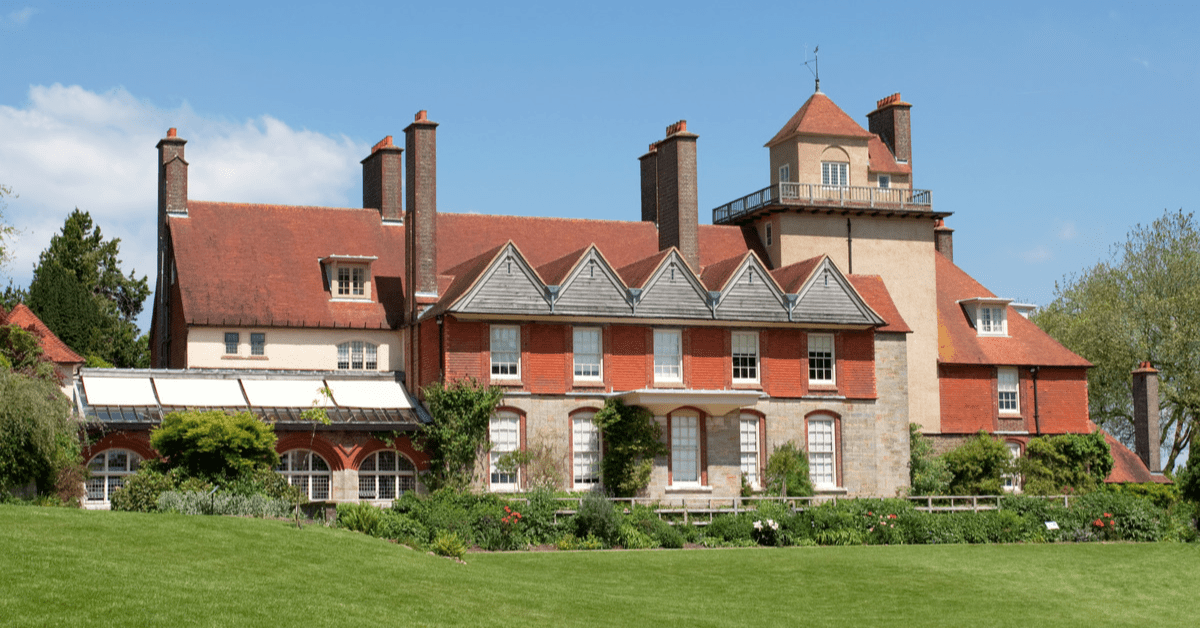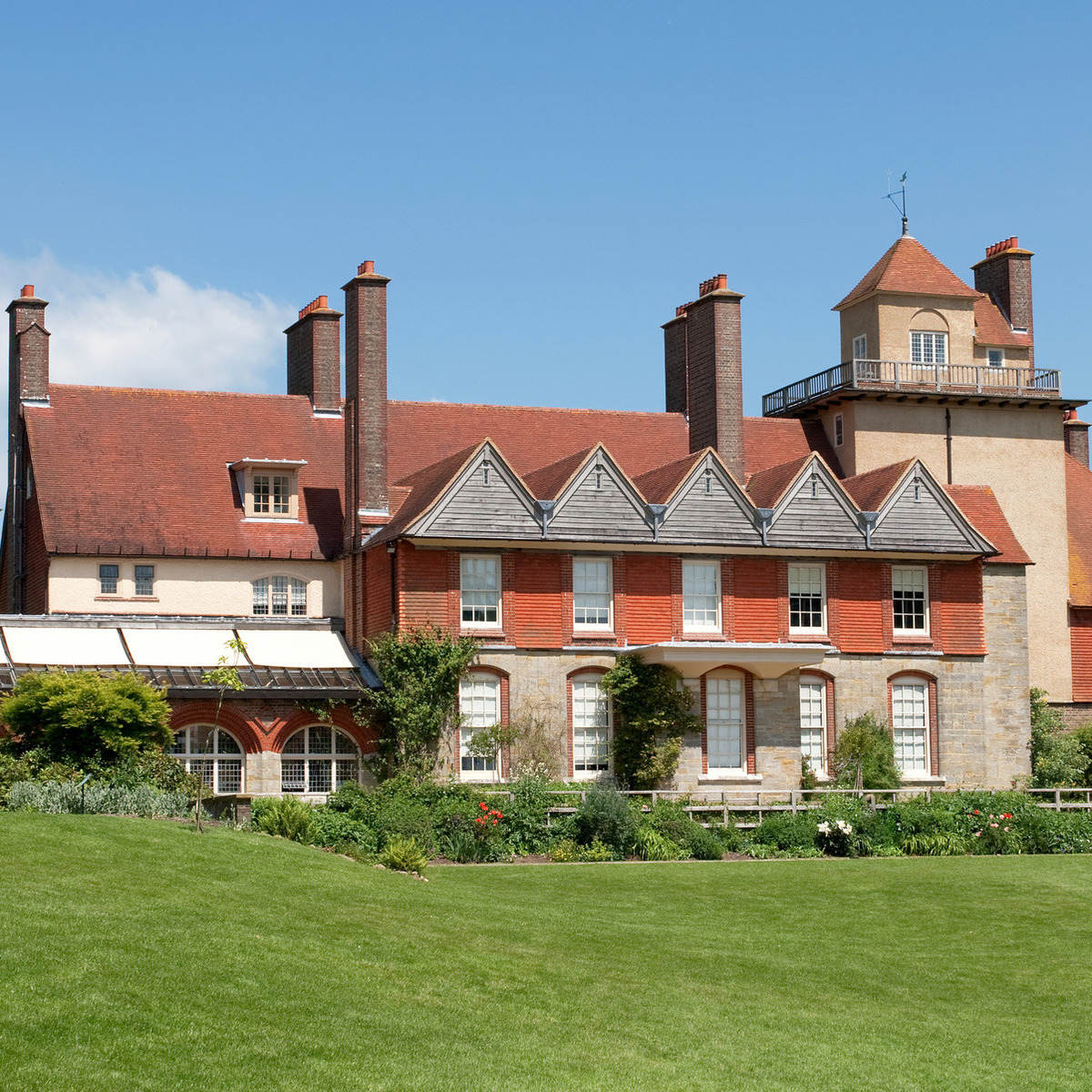‘The human quality of the building lingers with one like a choice flavour; like a portrait by a fine painter, one wants to know the sitter;’1
Standen’s ‘human quality’ impressed the architect, Halsey Ricardo when he visited the house on 18October 1898 and later published his thoughts in an article for The Magazine of Art. The notion of a house having a human quality is hard to pin down, for William Morris’s contemporaries it could refer to master craftsmanship, making and labouring by hand, for today’s visitors it could mean regarding Standen as a place they could call home. Each past and present perception offers an insight into Ricardo’s sentiments penned over a century ago. A key element underpinning this idea and lingering accolade can be attributed to Standen’s interior, a living space decorated in multiple layers founded on Arts and Crafts style, wallpapers, furnishings and textiles supplied by Morris & Co.
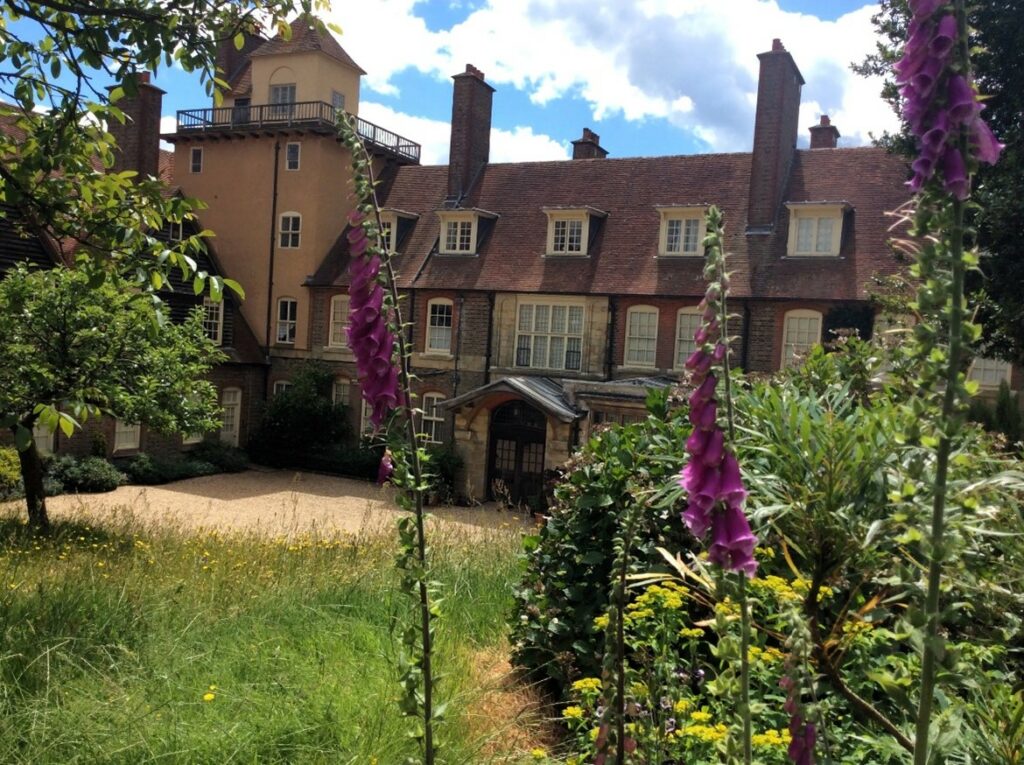
Architect Philip Webb designed and built Standen for James and Margaret Beale of 32 Holland Park, Kensington between 1891 and 94. The Beales were practical, progressive Unitarians who initially commissioned a holiday home in the country but made it their main residence once James, a highly respected London lawyer and businessman retired. Webb, a close friend of William Morris, was one of the founders of Morris, Marshall & Faulkner in 1861, a firm that later became Morris & Co., once the partnership was dissolved. The Beales would have known of Webb and Morris & Co. through their close friend Sir John Tomes and Upwood Gorse, the country home designed for them by the architect in 1868-9. Moreover, Webb worked on alterations for Sir John’s son, Charles Tomes in June 1889 at his home and dental surgery at 37 Cavendish Square. Morris & Co wallpapers were chosen, such as Fruit No.5, used for the surgery operating room and Bruges No. 238 for the main stairs.2 At No.1 Holland Park, the house just opposite the Beales, Webb was a familiar presence between 1879 and 1889. He worked on several alterations for the Beale’s neighbour and friend, Alecco Ionides for whom Morris & Co. supplied textiles and furnishings such as Flower Garden, silk and wool damask for the Drawing Room walls.
This article will highlight significant wallpapers, furniture, textiles and embroideries that were acquired from Morris & Co. to decorate Standen, either through Philip Webb or purchased by the Beales directly from Morris & Co.

Even before the house was completed in 1894, Margaret Beale and her elder daughters, with help from Webb, set about planning the decorations and furnishings for the main rooms of the house. As a keen plantswoman and nature lover, the William Morris designs which reflected garden flowers and the natural world particularly resonated with Margaret Beale, such as Trellis Morris’s iconic wallpaper design of 1864, with birds designed by Webb. It was chosen at Standen for the central ground floor and conservatory corridors which connected the principal family ground floor rooms.
William Morris’s early wallpaper designs were incorporated into other room schemes to complement vibrant and highly patterned Morris & Co. textiles. For example, the Drawing Room walls were papered with Sunflower, No. 275, 1879 wallpaper in green and originally, the windows were adorned with TrentNo.7826 curtains in pink, green and yellow on blue, a printed linen ‘chintz’, designed by Dearle in 1887.

© NT Collections 1213906
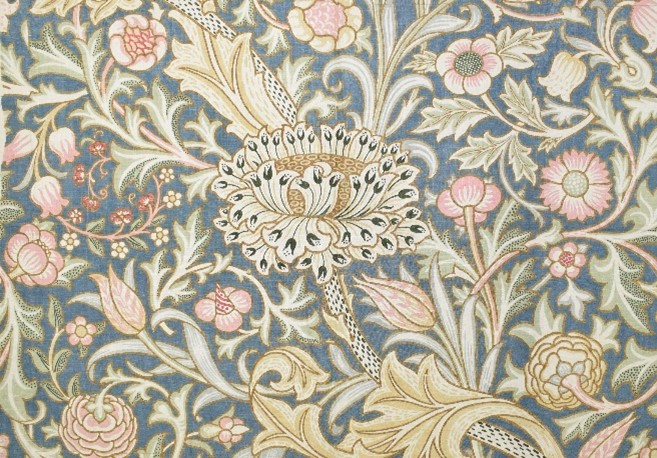
It would have presented a spectacular vision of pattern and colour especially when seen next to the silk, embroidered hangings in the Artichoke design, hung on either side of the fireplace, now on display in the North Spare Bedroom. Worked from a Morris & Co ‘embroider yourself kit’ by Margaret Beale and her daughters, the design was originally commissioned by Ada Phoebe Godman for Smeaton Manor in 1877.


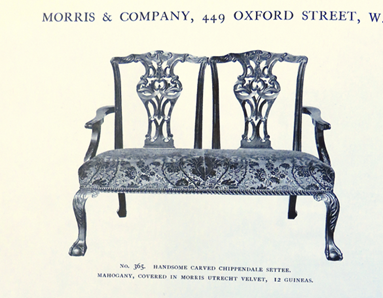
Margaret Beale noted the furnishings she purchased for each room in a notebook called ‘Holly Bush Furnishing Book’, detailing the item, the supplier and often the price paid, such as ‘ Settee Morris’ for the Drawing Room. This was a reproduction Chippendale two-seater settee, covered in green Morris, Utrecht Velvet ordered from Morris & Co on 5 November 1894, a popular piece which featured in the Morris & Co catalogue, No. 365. For William Morris, furniture for everyday life, in theory, should be plain and simple, however, he did acknowledge what he called ‘state-furniture which we have as much for beauty’s sake as for use’, referring to dining room and drawing room pieces that ‘might be as ornate and elaborately decorated as possible.’3
Although other principal rooms, such as the Dining Room and Morning Room were not wallpapered, their overall look is equally impressive. The Morning Room walls were hung with Daffodil Chintz No. 8777; 48 ¼ yds in the pink, green and yellow on blue colourway was ordered on 8 February 1894.4
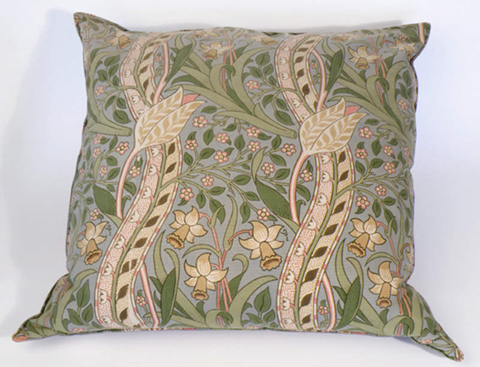
The Dining Room walls painted in green could be considered plain, by comparison, however, the dramatic stylised Peacock & Dragon curtains in woven wool bought from Morris & Co in 1897 complemented the paint colour to effectively unify the room’s decorative arrangement.5

The furnishings from Morris & Co were not only aesthetically pleasing, they were functional and where necessary, they were made to measure. A representative from Morris & Co. visited Standen in April of 1894 to provide an estimate for blinds, carpets, floor coverings and curtain poles. For James and Margaret’s bedroom and dressing room on the first floor, bordered squares of Wilton carpet No. B/4085 were ordered to be made up and fitted in June.6 Even the bathroom floors were catered for by Morris & Co. with corticine floor covering in design No.508, featuring marigolds against an arched trellis. This was Morris’s first design for a flooring covering and his only design for linoleum, c.1875.7 Although it is not possible to view this at Standen today, visitors can still enjoy in situ, most of the original Morris & Co wallpaper and textile designs initially chosen by the Beale family for the principal family rooms.
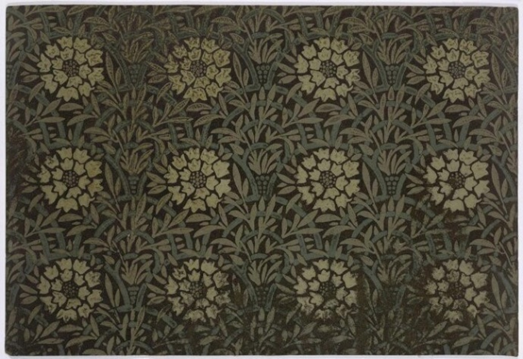
The enduring legacy of William Morris at Standen is enjoyed by many visitors every year. As this short article has highlighted that the wallpapers, textiles and furnishings from Morris & Co. are a core element of Standen’s arts and crafts character and spirit of place. As Halsey Ricardo’s words express, once you have been there, the experience ‘lingers with one like a choice flavour’.
Footnotes
1Halsey Ricardo, ‘The House in the Country’, The Magazine of Art, January 1900, 109.
2Philip Webb Site Notebook, SPAB Archive.
3G. Baseden Butt, Style tendencies in modern furniture, Good Furniture Magazine of Furnishing & Decoration, Vol 24. Grand Rapids, Mich.: Dean-Hicks Co, 19201925, p.311.
4Morris & Co., Bill of Sale, To J S Beale Esq., April 1 1894, West Sussex Record Office, MS288.
5Morris & Co. Bill of Sale, January 8 1897, West Sussex Record Office, Chichester, Standen MS361.
6Morris & Co., Bill of Sale, To J S Beale Esq., 5 November 1894, West Sussex Record Office, MS339
7Sample of linoleum floor covering with a design of marigolds against an arched trellis donated to the V & A by Helen Beale Accession Number CIRC.527-1953 see https://collections.vam.ac.uk/item/O89278/floor-covering-morris-william/
About the author
Anne Stutchbury, PhD is an independent art historian who has formerly worked at Charleston Farmhouse and for the Crawley Museums Society. Her research centres on the lived experience and social and cultural perspectives of the Arts and Crafts and Aesthetic movements. Besides assisting the National Trust with an archiving project at Standen, she is currently preparing her research for a forthcoming publication titled Standen: The Arts and Crafts Masterpiece of Philip Webb and Morris & Co.
National Trust – Standen website: https://www.nationaltrust.org.uk/visit/sussex/standen-house-and-garden
National Trust UK Shopping Online: https://shop.nationaltrust.org.uk/
